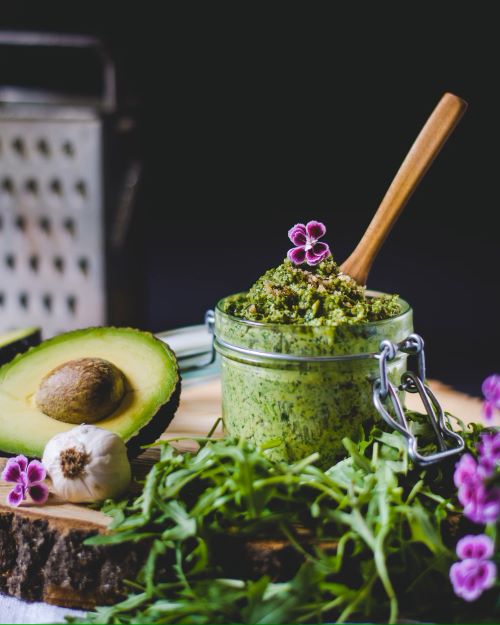Starting a journey towards a healthier lifestyle is an important decision. This guide is like a helpful friend for beginners, giving useful tips, easy-to-follow steps, and a plan to make progress that lasts.
Think of it as a friendly guide, making fitness simple and showing the way to build good habits. It helps you learn about exercise basics and how to make good choices about what you eat. The goal is to give you the knowledge and tools to make smart decisions for your health. It’s not about quick fixes but about taking small steps for a better and healthier life.
Understanding the Basics
Embarking on a journey towards a healthier lifestyle is a transformative decision, and to set the foundation for success, it’s crucial to comprehend the fundamental elements that contribute to overall well-being. Let’s go over the key components that will empower you to craft a comprehensive and effective exercise plan.

Cardiovascular Exercise: Elevating Your Heart Health
Cardiovascular exercise is the cornerstone of a robust fitness routine, enhancing not just your physical health but also your cardiovascular well-being. Engage in activities such as brisk walking, cycling, or swimming, allowing your heart to pump efficiently.
Aim for a minimum of 150 minutes of moderate-intensity cardio each week. As your fitness level improves, consider extending the duration or intensifying your workouts. This boosts your endurance and contributes to weight management and stress reduction.
Strength Training: Sculpting a Stronger You
Building muscle strength is a pivotal aspect of a well-rounded fitness regimen. Whether you choose bodyweight exercises or incorporate weights, the goal is to progressively challenge your muscles. Commence with foundational exercises, gradually advancing to more demanding ones as your strength increases.
Dedicate 2-3 weekly sessions to strength training, focusing on diverse muscle groups to foster balanced development. Strengthening your muscles enhances physical performance and supports bone health and metabolism.
Flexibility and Mobility: Embracing Fluidity and Preventing Injuries
Flexibility and mobility are a comprehensive fitness plan’s unsung heroes, promoting agility and preventing potential injuries. Activities like yoga and Pilates enhance flexibility while improving overall body mobility. Devote time to stretching exercises 2-3 times a week to maintain suppleness and agility. This not only safeguards you from injuries but also complements your other fitness endeavors. Embrace the fluidity of movement, and you’ll find yourself moving more comfortably through all aspects of your life.
In summary, these foundational elements—cardiovascular exercise, strength training, and flexibility—form the bedrock of your fitness journey. As you embark on this path, remember that progress is a gradual process, and consistency is key to unlocking the full spectrum of benefits for your physical and mental well-being.
Setting realistic goals
To make your fitness journey successful, it’s crucial to set clear and achievable goals. Use the SMART criteria for a structured approach:
Specific: Clearly define goals that match what you want to achieve in fitness. Whether it’s losing weight, getting more endurance, or gaining muscle, having a clear goal is important.
Measurable: Keep track of your progress regularly. Use a workout journal, fitness app, or any way that helps you see how far you’ve come, ensuring you stay on the right path.
Attainable: Set goals that challenge you but are also realistic. This keeps you motivated without feeling overwhelmed. Increase the difficulty as you become more confident and stronger.
Relevant: Align your goals with your overall fitness plan. If you’re focusing on losing weight, adjust your workouts and diet to make them effective for weight loss.
Time-bound: Give yourself a deadline for your goals. Having a timeframe adds urgency and commitment. It helps you track progress and stay focused on reaching your goal on time.

Building a Sustainable Workout Routine
Keeping up with your workouts is the foundation of a successful fitness routine. To create a workout plan that lasts, find a balance that fits your lifestyle and what you like.
Cardiovascular Workouts: Pick activities that make you happy and that you can do regularly. It could be hiking, dancing, or joining group classes. Make sure you enjoy your cardiovascular exercises—they should be fun!
Strength Training: Start with exercises that work many muscles at once. Squats, deadlifts, and bench presses are good options. Begin with lighter weights and slowly use heavier ones as you get stronger.
Flexibility and Mobility: Spend some time stretching or doing yoga to stay flexible and prevent stiffness. This not only helps avoid injuries but also adds to your overall fitness experience. Make it a regular part of your routine.

Nutrition for Long-Term Success
Staying healthy isn’t just about exercising; what you eat is important too. Here are some simple tips for a healthy lifestyle:
Balanced Diet: Eat foods with lots of nutrients, like fruits, vegetables, lean proteins, whole grains, and healthy fats. Having a mix of these foods helps keep you healthy and perform well.
Hydration: Drink enough water throughout the day to stay hydrated. This is crucial for your body to work well and helps you perform better during workouts.
Moderation: Don’t follow extreme diets or eat too little. Instead, eat in moderation and control your portions. You can still enjoy a variety of foods without feeling guilty.
Meal Timing: Spread your meals and snacks evenly throughout the day to keep your energy levels up. Make sure each meal has a good mix of carbohydrates, proteins, and fats to give your body the nutrients it needs.

Improving Your Fitness Journey with a Special Diet
While eating a balanced diet is important, some people might find benefits in special diets based on their needs:
Ketogenic Diet:
- Eat lots of healthy fats and fewer carbs.
- Good for weight loss and clearer thinking.
- It takes careful planning to get enough nutrients.
Mediterranean Diet:
- Eat plenty of fruits, veggies, whole grains, and healthy fats.
- Focus on lean proteins like fish and poultry.
- It helps with heart health and living longer.
Plant-Based Diet:
- Most people eat foods from plants.
- Can be good for the heart, weight, and overall health.
- You need to pay attention to get enough protein.
Intermittent Fasting:
- Switch between eating and fasting times.
- It could help with weight loss and metabolism.
- It works best if you’re comfortable with set eating times.
Remember, these diets need careful consideration. It’s a good idea to talk to a healthcare professional or nutritionist before making big changes to your diet.
Savour the Journey:
Pursuing a healthier lifestyle is not a race; it’s a journey that unfolds with every mindful choice and positive habit you cultivate. Embrace the joy in the process, finding satisfaction in the daily rituals that contribute to your well-being. Whether it’s the endorphin rush after a rewarding workout, the sense of accomplishment in preparing a nutritious meal, or the mental clarity gained through mindfulness practices, savor these moments as integral parts of your holistic health journey.
Appreciate the Long-Term Dividends
Recognize that the investment you make in your health pays off not just in the present but in the long run. A commitment to fitness yields dividends in the form of sustained energy levels, an extended and vibrant life, and an overall sense of well-being. As you navigate this path, remember that the benefits extend beyond physical appearance; they permeate into your mental and emotional realms, fostering resilience and a positive outlook on life.
Therefore, let your pursuit of a healthier lifestyle be a source of joy, accomplishment, and lasting well-being. Your commitment today echoes into your future, creating a foundation for a life rich in vitality and fulfilment. Embrace the journey, celebrate your victories, and revel in the profound and enduring benefits of being fit for life. Your health is an investment that pays dividends far beyond what meets the eye.
Conclusion
Embarking on the journey to a healthier lifestyle demands commitment, but it need not be a daunting burden.
Each milestone you achieve, whether big or small, is a testament to your dedication and perseverance. Take the time to acknowledge and celebrate these successes.
Whether it’s reaching a fitness goal, adopting a healthier eating habit, or experiencing an improvement in your overall well-being, every achievement deserves recognition. These celebrations serve as motivational checkpoints, reinforcing your commitment to wellness.
